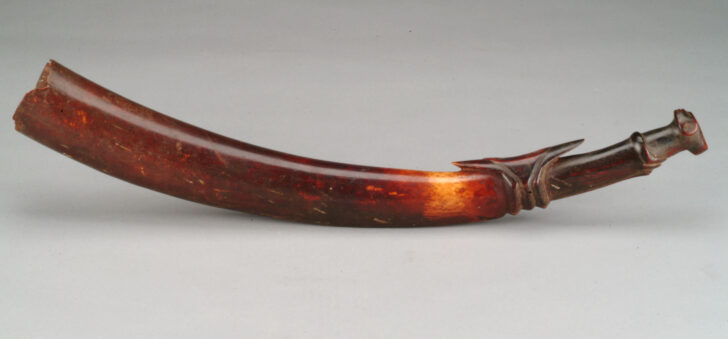Oliphant
Mangbetu

Description
Subject Matter:
This exquisite ivory horn with a sculpted head at its extremity is attributed to the Mangbetu, who live in the Democratic Republic of the Congo. Decorated ivory oliphants were part of a king’s regalia and was one of many musical instruments played in court orchestras along with wooden gongs, drums, and iron bells.
Oliphants were used by heralds to announce important royal festivities, hunting or fishing expeditions, as well as to communicate danger, position, and retreat in battles. Besides having these practical functions, ivory horns such as this one were objects of prestige and royal insignias that served as visual tools by which the king projected his self-image and signaled his social status to all those around him.
References:
A History of Art in Africa. 2nd Edition. Eds. Monica Visona, Robin Poynor, and Herbert Cole. Upper Saddle River, NJ: Pearson Education, Inc., 2008.
Maurer, Evan M. and Niangi Batulukisi. Spirits Embodied: Art of the Congo, Selections from the Helmut F. Stern Collection. Minneapolis: The Minneapolis Institute of Arts, 1999.
Physical Description:
This Mangbetu ivory horn features a sculpted, highly schematic human head with an elongated neck at its extremity. The horn’s reddish coloration could be the result of the addition of pigment such as tukula (camwood) powder or the application of palm oil. The discoloration seen under the mouthpiece was due to wear caused by a fiber cord from which the instrument was suspended.
Usage Rights:
If you are interested in using an image for a publication, please visit https://umma.umich.edu/request-image/ for more information and to fill out the online Image Rights and Reproductions Request Form.